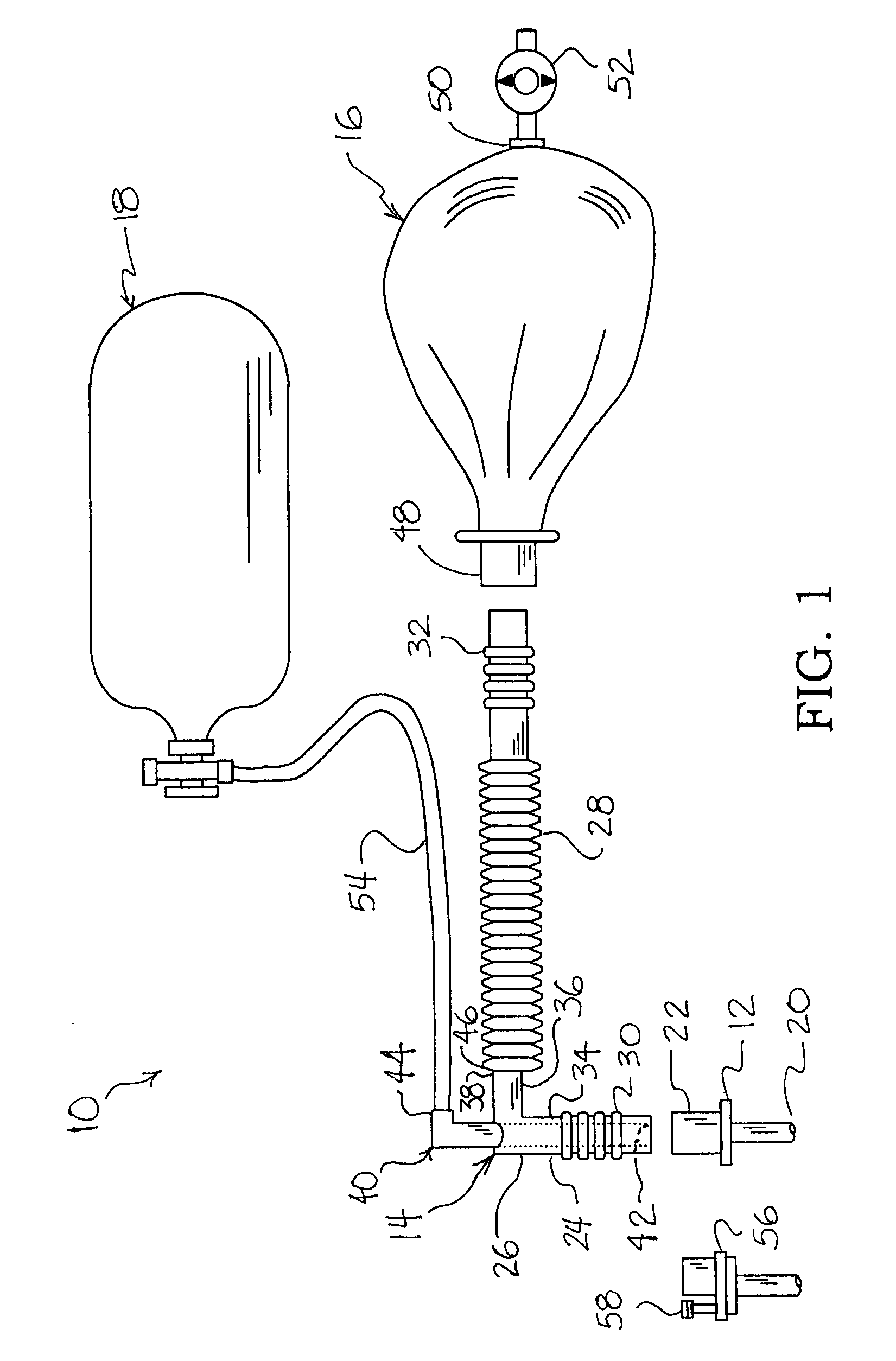Breathing circuit
a technology of circuits and breathing tubes, applied in the field of breathing circuits, can solve the problems of inability to trust the medical staff wholly that patients have complied with pre-anesthesia instructions, many challenges, and inherently complex procedures of anesthesia
- Summary
- Abstract
- Description
- Claims
- Application Information
AI Technical Summary
Benefits of technology
Problems solved by technology
Method used
Image
Examples
Embodiment Construction
[0024]Referring to the drawings and initially to FIG. 1, breathing circuit 10 includes a patent airway maintaining device 12, a first tube 14 and an inflatable gas bag 16. An external source of oxygen 18 is coupled to tube 14. Breathing circuit 10 combines airway maintaining device 12 with a novel method and structural arrangement of breathing circuit components to supply oxygen at a low pressure to patients.
[0025]Patent airway maintaining device 12 is a conventional device for intubation such as, for example, an endo-tracheal tube or a laryngeal mask airway. Airway maintaining device 12 includes a distal end portion 20 and a proximal end portion 22 and has a tubular wall that defines a fluid tight conduit. Distal end portion 20 can have a range of sizes suitable for humans from infants to adults. Proximal end portion 22 has a standard connector for interfacing with first tube 14. The tubular wall of airway maintaining device 12 defines a first central longitudinal axis.
[0026]Tube 1...
PUM
 Login to View More
Login to View More Abstract
Description
Claims
Application Information
 Login to View More
Login to View More - R&D
- Intellectual Property
- Life Sciences
- Materials
- Tech Scout
- Unparalleled Data Quality
- Higher Quality Content
- 60% Fewer Hallucinations
Browse by: Latest US Patents, China's latest patents, Technical Efficacy Thesaurus, Application Domain, Technology Topic, Popular Technical Reports.
© 2025 PatSnap. All rights reserved.Legal|Privacy policy|Modern Slavery Act Transparency Statement|Sitemap|About US| Contact US: help@patsnap.com



